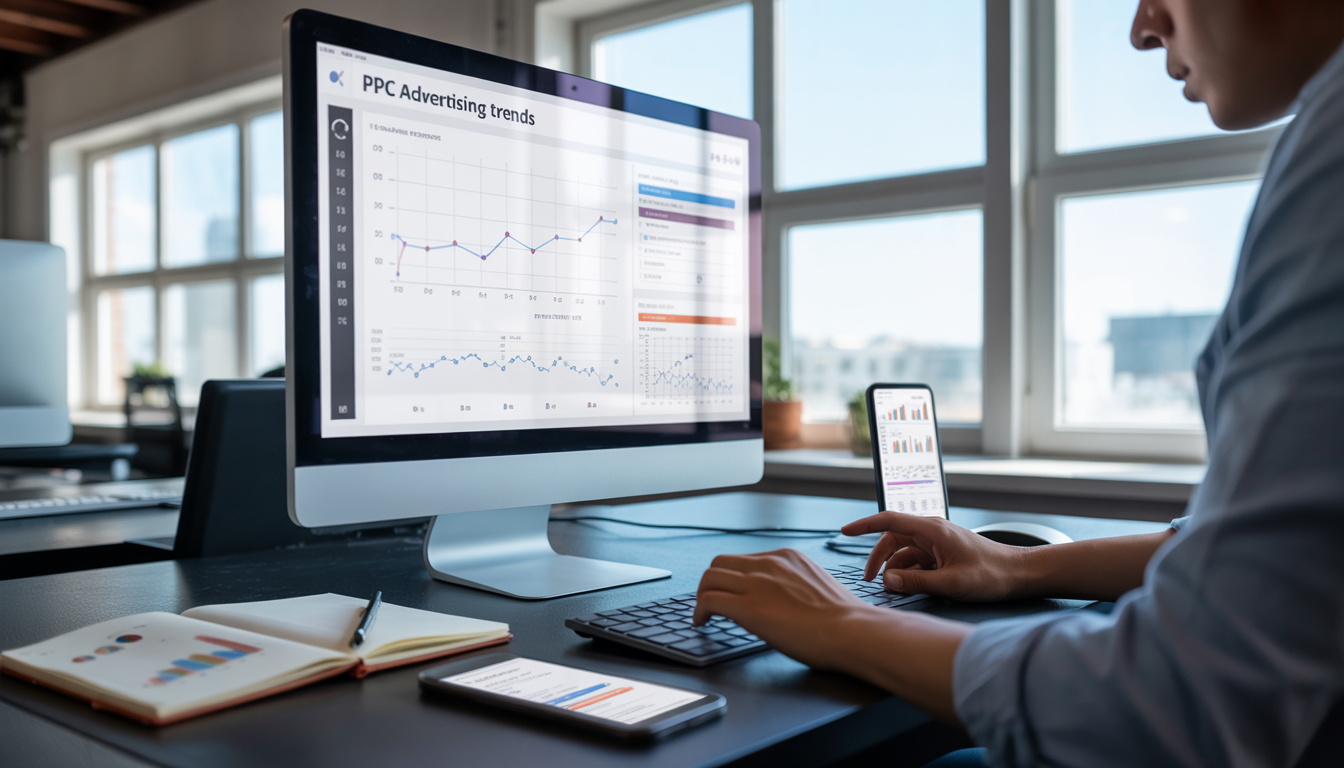
Digital marketer reviewing Google Ads analytics dashboard with graphs and ROI metrics on a laptop in a modern office setting
PPC advertising isn’t just a marketing buzzword—it’s the engine behind thousands of successful brands online. In 2026, the landscape of pay-per-click marketing is more dynamic, data-driven, and competitive than ever. Whether you’re a small business owner, a marketing professional, or an in-house manager, understanding the latest PPC trends 2025 and mastering Google Ads management can mean the difference between wasted budget and a healthy, measurable ROI.
The digital marketplace is always shifting, but one thing remains constant: Google Ads continues to dominate as the go-to platform for PPC advertising. With new tools, smarter automation, and evolving user habits, getting the most out of your campaigns requires more than just setting up ads and watching the clicks roll in. Success in 2026 is about staying sharp, adapting to change, and using every advantage available to keep your brand visible and profitable.
In this article, you’ll find a practical look at the most important PPC advertising trends, actionable strategies for improving your Google Ads ROI, and expert tips to help your business thrive. From automation to audience targeting and creative excellence, here’s how you can stay ahead in the world of pay-per-click marketing.
PPC advertising has come a long way from the early days of simple text ads. In 2026, it’s a sophisticated ecosystem powered by AI, machine learning, and vast amounts of data. Search engines and social platforms are smarter, user expectations are higher, and competition for top ad spots is fierce.
Google Ads management has changed, too. Marketers now have access to more automation, better audience segmentation, and improved analytics. At the same time, privacy regulations and cookie restrictions mean advertisers must be more creative and strategic with targeting.
Key shifts in PPC trends 2025–2026 include:
Also Read: AI in Digital Marketing: Smarter Tools, Automation, and Real Results in 2026
Automation is now at the heart of effective Google Ads management. Google’s AI-driven bidding strategies, like Target CPA and Maximize Conversion Value, take millions of signals into account in real time. This means your ads are shown to the right person, at the right time, for the right price.
How to leverage automation in 2026:
Pro tip: Don’t “set and forget.” Review automated campaigns regularly. Human oversight ensures your brand voice and goals stay aligned with machine decisions.
With third-party cookies fading out, first-party data is a hot topic in PPC advertising. This is data you collect directly from your customers—like website visits, purchases, and newsletter signups.
Why does first-party data matter?
How to use first-party data:
Example:
A fitness brand used first-party data to retarget past buyers with new product launches, improving ROI by over 30% compared to generic audience targeting.
Also Read: Choosing the Right Digital Marketing Agency: What to Look for in 2026
In 2026, creative quality can make or break a PPC campaign. With more brands fighting for attention, eye-catching visuals and compelling messaging are essential. Google’s ad formats are more flexible, letting you use video, images, and interactive elements to stand out.
Tips for creative success:
Example:
A local restaurant ran video ads with mouth-watering visuals and a one-click reservation button, doubling their bookings in just three months.
Not all clicks are created equal. The latest PPC trends focus on getting your message to the right audience at the right moment. Google Ads now offers powerful ways to segment by demographics, interests, and online behavior.
Key strategies:
Pro tip: Combine audience targeting with tailored creative for each segment for the best results.
Also Read: Real Estate Crowdfunding: How to Invest in Property with Just $100
Tracking performance is essential for maximizing ROI with Google Ads management. Google’s analytics tools have grown more advanced, allowing you to measure the true impact of your campaigns.
What’s new in 2026:
How to use analytics for better PPC results:
Video and visual search are two of the fastest-growing trends in pay-per-click marketing. YouTube, Google Discover, and image search ads are seeing huge increases in engagement and conversions.
Why it matters:
How to take advantage:
Example:
An online home décor retailer used shoppable image ads on Google Discover, resulting in a 50% increase in sales from mobile users.
With rising concerns about privacy and data use, PPC advertisers must follow best practices and new regulations. Google is rolling out new privacy features and ad transparency tools, and users expect control over how their data is used.
Best practices for ethical PPC:
Staying ahead means using the right tools. In 2026, the best PPC marketers rely on a mix of Google’s own features and third-party platforms.
Essential tools:
Pro tip:
Set a schedule to review the latest tools and updates. The best PPC marketers never stop learning.
Automation, first-party data targeting, video and visual search ads, and smarter audience segmentation are leading trends shaping PPC this year.
Focus on smart bidding, use your own customer data, test creative assets, and analyze your results regularly. Avoid “set and forget”—review and adjust campaigns often.
Manual bidding is less common as Google’s machine learning outperforms most manual strategies. However, some advertisers still use manual bids for niche campaigns or specific control.
Yes—if you focus on high-intent audiences, strong creative, and smart optimization. Higher ROI is possible when you target the right users and measure performance closely.
Follow the official Google Ads Blog, join industry newsletters (like Search Engine Land), and participate in digital marketing communities.